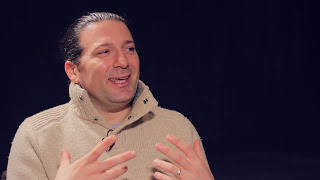In Chapter 9 of 15 of her 2010 Capture Your Flag interview, non-profit executive and Students of the World founder Courtney Spence answers "What inspired you to create Students of the World and what has you most hopeful about the legacy the organization can build over time?" Spence shares how she formed her organization after doing a travel abroad experience and working with the Center for Documentary Studies at Duke University. There she learned how to apply storytelling and documentary media as a tool to impact social change.
By connecting her international community immersion with her desire to help college student program participants apply creative and technical tools to showcase impactful stories, Spence founds her non-profit Students of the World to help students engage in projects where they learn and affect positive change through their actions.
Transcript:
Erik Michielsen: What inspired you to create Students of the World and what has you most hopeful about the legacy the organization can build over time?
Courtney Spence: It was my international experiences to date as a sophomore and it was also the Center for Documentary Studies at Duke, it’s a fantastic organization full of people who are so dedicated to this idea of storytelling but not just for the sake of storytelling but for having it go somewhere, they really believe in using documentary media as a tool for social activism and social change, that idea just blew me away.
I’m familiar with storytelling in media formats but the idea that you can use it for good was just -- it got me really excited. So it was could I find a way to marry those two ideas, one immersing yourself in international communities, challenging yourself as an individual, as a young person but also taking innate skills that you have at the time and really taking them and translating them into something that can make a difference. Young people can tell stories, young people know – especially now, I mean gosh, ten years later our students learned Final Cut when they were in sixth grade! I mean they speak through media, multimedia platforms, this is how they communicate so in many ways we were really lucky because technology and trends sort of followed this idea to date where I’m just blown away with the creativity that comes from these young people and there’s a real sense among so many of our students to give back.
So I think, for me that it is something that is really encouraging and when you talk about this legacy of Students of the World, I really – I hope that it becomes a way for young people to realize that they can make an impact now, you don’t have to take leadership courses to make a difference when you’re forty five, you can be a leader, you can be a change maker, you can be an influencer in your twenty, twenty-one, twenty-two years. But, you know as twenty-one year-old, twenty-two year-old but at the same time you have so much to learn so this concept of going in and saying ‘ We’re not going to tell you how to do this, I’m not here to teach you English, I’m here to just – tell me your story, let me learn from you and let me recognize that you’ve had infinite more experiences than I’ve had’, you know battling HIV on the ground, caring for orphaned children, dealing with human trafficking in Northern Thailand I mean these are issues that people at every age face day in day out and I think that if we can show young people that they can be involved but they also still have a lot to learn I think that that would be a good thing.























